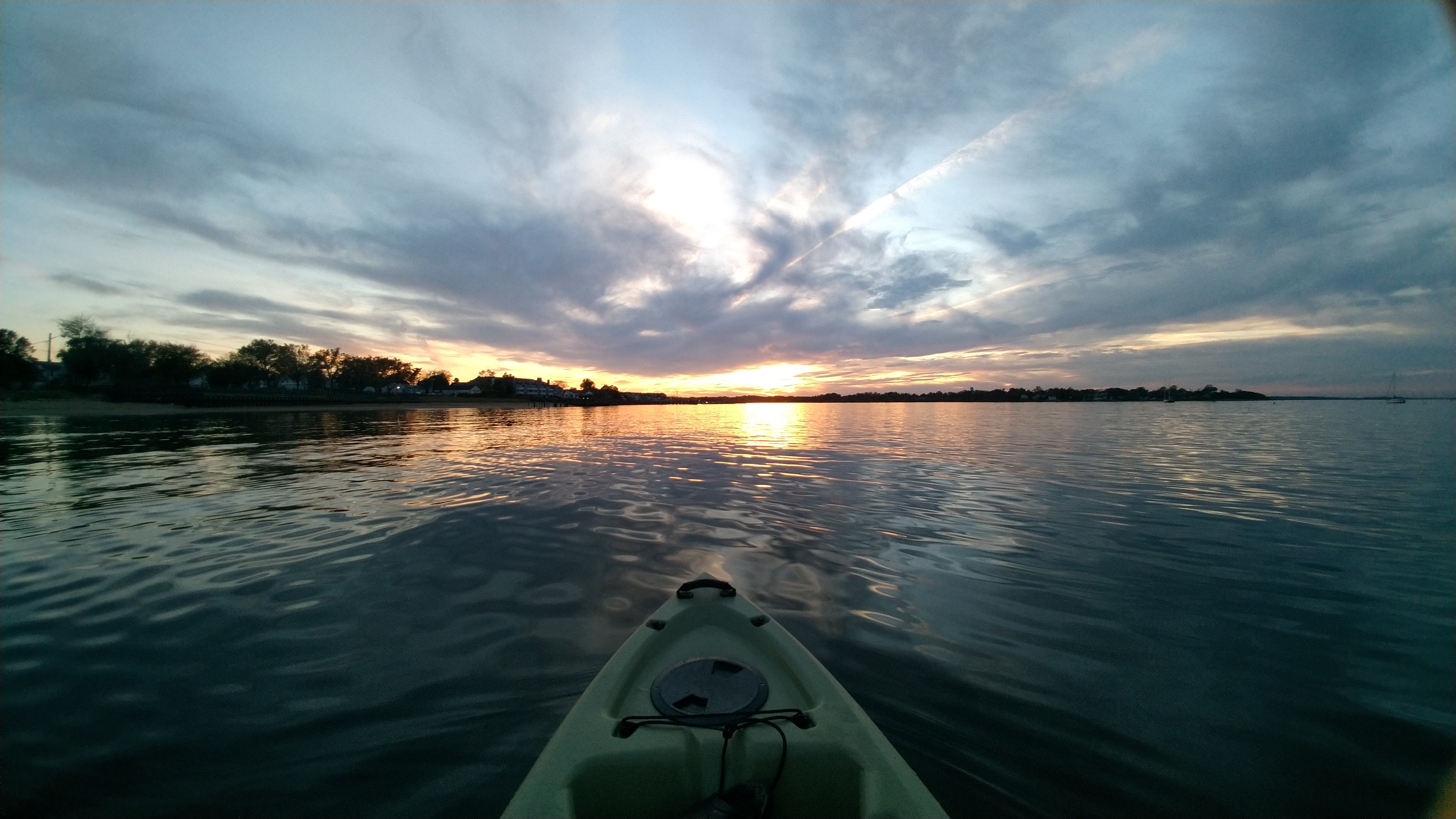Laurence Harbor / Cheesequake Creek
- Lake Lefferts - Matawan ( 40.41563, -74.23362 )
- Raritan Bay - Cliffwood (E) ( 40.45089, -74.22033 )
- Raritan Bay - Cliffwood (W) ( 40.45216, -74.22269 )
- Raritan Bay - Cliffwood (Whale Creek) ( 40.45090, -74.22274 )
- Raritan Bay - Keyport (W) ( 40.43921, -74.20160 )
- Raritan Bay - Laurence Harbor (E) ( 40.45877, -74.24622 )
- Raritan Bay - Laurence Harbor (W) ( 40.46223, -74.25482 )
- Raritan Bay - South Amboy (N) ( 40.48343, -74.27059 )
- Raritan Bay - South Amboy (S) ( 40.47946, -74.26831 )
- Raritan Bay - South Amboy Ramp ( 40.48401, -74.27416 )
- Raritan River - Perth Amboy ( 40.50057, -74.27712 )
- Wagner's Marina - Matawan Creek ( 40.43540, -74.21416 )
Much of this part or Raritan Bay is fenced-off because of lead pollution from the industrial slag used to build jetties and seawalls in the 1970s. Supposedly, most of it has been cleaned up, but the whole area remains ‘off-limits’. Since the toxins leach into the water and are carried off by the currents, you really have to wonder about the entire bay. A quick search online will reveal more on this subject than you ever wanted to know.
The Raritan Bay Slag Superfund Site consists of a seawall along the coast of the Raritan Bay in the Laurence Harbor section of Old Bridge Township, New Jersey, United States. The seawall itself is made of slag. In this seawall, are large concentrations of lead, antimony, arsenic, and copper. The lead in particular has contaminated the nearby soil and surface water. The slag deposits are a by-product from NL Industries (formerly known as National Lead Company), a lead smelting company, dumping its wastes in the Raritan River. The New Jersey Department of Environmental Protection (NJDEP) investigated the area and found large concentrations of metals to be dangerous to human health. The NJDEP called the United States Environmental Protection Agency (EPA) to investigate the area further, which resulted in some of the slag being physically removed and the toxic areas being fenced off.
In September 2016, $7 million of federal funding was awarded to the region. The Superfund State Contract was signed in July 2016. Field work officially began in November 2016. Partial site cleanup was completed in late fall of 2017. In 2021, dissatisfied with the progress of the cleanup, the EPA took over control of the site. The EPA claimed that National Lead was essentially dragging its feet in showing progress in cleanup design studies, both in June of 2020 and April of 2021, that they still continued to lack sufficient detail and were deemed unacceptable. The takeover came five years after National Lead was given multiple extensions to provide the report.
https://en.wikipedia.org/wiki/Raritan_Bay_Slag_Superfund_Site
That said, I went there one warm but windy November day, and found the area quite nice, and the water crystal clear. I put in from the west parking lot on the little beach there, closest to the inlet. At low tide, this is more of a morass than a beach, but at high tide it wasn’t bad at all. I made a quick paddle straight to the inlet, over the east jetty that was completely submerged. I crossed the channel and poked out past the end of the west jetty, but with a strong west wind, conditions on the unprotected side were not good, so I quickly headed back behind the shelter of the jetty and went up the creek.
The Cheesequake Creek at this point would qualify as a river. However, the railroad bridge across the creek is normally down, only opening on demand, leaving about 2 feet of clearance at high tide. To get under that, you’d have to undo your seat back and lie down in the boat, going hand-over-hand under the bridge, then put it all back together. I didn’t feel like doing all that, so I messed around in the side creek and the marina a bit, and called it a day. Don’t make a bother of yourself in a marina. Someday I’ll go all the way up the creek to Cheesequake Park.



All in all, I was surprised how nice a trip this was. I think it was because it was almost winter. In the summer you’ll find the whole area filthy and smelly, with heavy boat traffic.




The draw of the S35 Bridge, at mile 0.0, at Morgan, South Amboy, New Jersey, shall operate as follows:
(1) From April 1 through November 30 from 7 a.m. to 8 p.m., the draw need only open on the hour. From 8 p.m. to 11 p.m. the draw shall open on signal. From 11 p.m. to 7 a.m. the draw shall open after at least a two hour advance notice is given by calling the number posted at the bridge.
(2) From December 1 through March 31, the draw shall open on signal after at least a two hour advance notice is given by calling the number posted at the bridge.
https://www.waterwayguide.com/bridge/3-1821/nj-35-bridge

A sad side note to the pollution story is that in the 1990s the town invested quite a lot into developing the waterfront here, installing a boardwalk, snack bars, rest rooms, showers, and even a police substation, before the whole area was closed down by the EPA in 2012. Perhaps someday it will be re-opened. Nearby, the Cliffwood waterfront is coming along nicely.
Links
- https://www.1stdibs.com/art/photography/black-white-photography/george-tice-wrecked-boat-cheesequake-creek-morgan-nj/id-a_204332
- https://www.morgan-nj.org/blog/sample-page/bridges-roads-rails/bridges/the-bridges-of-cheesequake-creek/
In Cheesequake Park, the rangers occasionally conduct guided paddling tours, but to quote the NJDEP page for the park: “No access is permitted to the tidal creeks.”

Questions or Inquiries?
Just want to say Hello? Sign the .